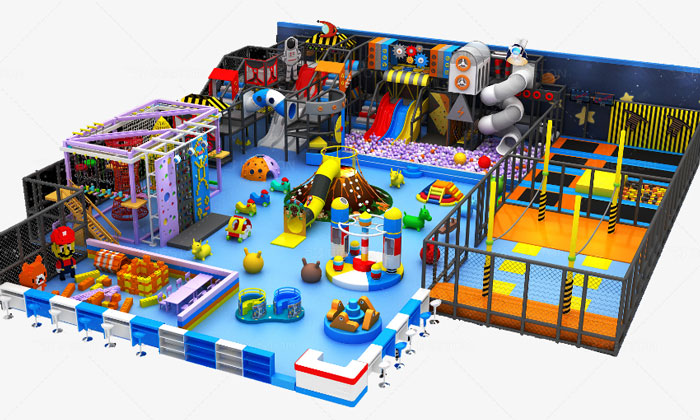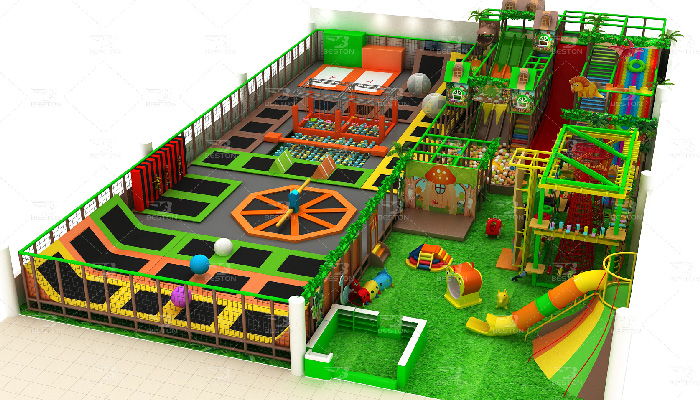Trampoline parks and indoor playgrounds are popular recreational spaces that cater to individuals of various ages, providing a range of activities to promote physical activity and social interaction. While both offer indoor entertainment, they differ significantly in terms of design, activities, and target demographics.
1. Core Activities
Trampoline Park
Trampoline parks are characterized by wall-to-wall trampolines, creating a vast bouncing surface. The primary activity revolves around bouncing, jumping, and performing aerial maneuvers. These parks often feature interconnected trampolines, foam pits, and even trampoline basketball courts. Activities may include free jumping, dodgeball, slam dunk contests, and fitness classes specifically designed for trampoline park for sale Philippines.
Indoor Playground
Indoor playgrounds, on the other hand, provide a more diverse range of activities. They typically include climbing structures, slides, ball pits, tunnels, and various other play equipment. The emphasis is on imaginative play, exploration, and physical exercise through activities like climbing, sliding, crawling, and balancing. Indoor playgrounds are designed to stimulate a child’s creativity and motor skills.
2. Safety Measures
Trampoline Park
Safety is a paramount concern in trampoline parks due to the potential for high-flying activities. These facilities often implement strict safety protocols, including safety briefings, age-specific areas, and trained staff monitoring the activities. The trampolines themselves may have safety nets and padding to minimize the risk of injuries. Participants are usually required to follow specific rules and guidelines to ensure a safe experience.
Indoor Playground
While safety is also crucial in indoor playgrounds, the risks are generally lower compared to trampoline parks. Play structures are designed with rounded edges, soft materials, and enclosed spaces to minimize the risk of injury. Supervision is essential, and some indoor playgrounds may have age-specific areas to ensure that younger children can play safely away from more active or adventurous play zones.
3. Target Demographics
Trampoline Park
Trampoline parks are often targeted towards older children, teenagers, and adults. The activities offered cater to individuals who are looking for a more dynamic and physically challenging experience. While some trampoline parks have designated areas for younger children, the overall atmosphere is geared towards an older demographic.
Indoor Playground
Indoor playgrounds are designed with a broader age range in mind. They often cater to younger children, typically ranging from toddlers to pre-teens. The play equipment is designed to accommodate various developmental stages, providing age-appropriate challenges for children of different abilities and interests.
4. Social Interaction
Trampoline Park
Trampoline parks promote social interaction through activities like trampoline dodgeball and basketball. The dynamic and energetic atmosphere encourages group participation and friendly competition. It’s a space where friends and family can engage in physical activities together.
Indoor Playground
Indoor playgrounds foster social interaction through imaginative play. Children can engage in role-playing, group games, and cooperative activities. The diverse play areas allow for a range of social interactions, from parallel play among younger children to more collaborative play as they grow older.

5. Physical Benefits
Trampoline Park
Trampoline parks provide excellent cardiovascular exercise, strength training, and improved coordination. Jumping on trampolines engages various muscle groups, promoting physical fitness and agility.
Indoor Playground
Indoor playgrounds contribute to physical development through activities like climbing, crawling, and sliding. These activities help improve gross motor skills, balance, and coordination in a more varied and exploratory setting.
In conclusion, while both trampoline parks and indoor playgrounds offer indoor entertainment and physical activity, they cater to different demographics and emphasize different types of play. Trampoline parks from Beston Rides in the Philippines provide a dynamic and exhilarating experience for older children and adults, while indoor playgrounds offer a diverse range of activities for a broader age range, with a focus on imaginative play and exploration. Both types of facilities contribute to physical fitness and social development in their own unique ways.

